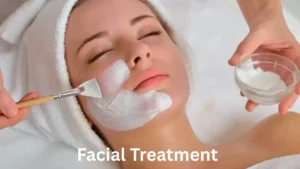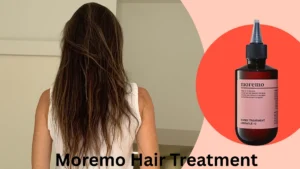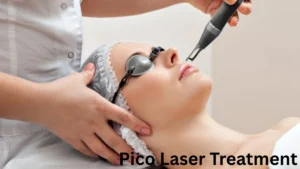A facial treatment is more than just a luxury—it’s a vital skincare procedure designed to cleanse, nourish, and rejuvenate your skin. Whether you’re battling acne, dryness, aging signs, or simply want to maintain a radiant complexion, facials play a crucial role in keeping your skin healthy and glowing.
In this guide, we’ll explore everything you need to know about facial treatments, including the steps involved, types of facials, benefits, and tips to choose the right one for your skin.
| Hospital Name | Location | Specialties | Website |
|---|---|---|---|
| Cleveland Clinic Abu Dhabi | Abu Dhabi | Cardiology, Neurology, Oncology | clevelandclinicabudhabi.ae |
| Rashid Hospital | Dubai | Trauma, Emergency Medicine, Surgery | dha.gov.ae |
| Mediclinic City Hospital | Dubai | General Medicine, Surgery, Maternity | mediclinic.ae |
| Saudi German Hospital | Dubai | Multispecialty | saudigerman.com |
| Al Zahra Hospital | Sharjah | General Surgery, Pediatrics | alzahra.com |
| NMC Specialty Hospital | Abu Dhabi | Orthopedics, Cardiology | nmc.ae |
| American Hospital Dubai | Dubai | Cardiology, Oncology, Surgery | ahdubai.com |
What Is a Facial Treatment?
A facial treatment is a multi-step skincare procedure focused on improving the health and appearance of your face. Typically performed by professional estheticians or dermatologists, facials involve cleansing, exfoliating, steaming, extraction of impurities, massage, mask application, and sometimes specialized serums. The ultimate goal is to detoxify the skin, boost circulation, and enhance your skin’s natural glow.
Common Steps in a Facial Treatment
- Cleansing: The process begins by removing makeup, dirt, and excess oils to prepare the skin for deep cleansing.
- Exfoliation: Dead skin cells are gently sloughed off to reveal smoother, brighter skin underneath.
- Steaming: Warm steam opens pores to facilitate deeper cleansing and easier extraction.
- Extraction: Blackheads, whiteheads, and other impurities are carefully removed to clear clogged pores.
- Facial Massage: A soothing massage improves blood flow and encourages lymphatic drainage, reducing puffiness and improving skin tone.
- Mask Application: Customized masks hydrate, nourish, or detoxify the skin depending on your needs.
- Serum Infusion: Targeted active ingredients are infused into the skin to address specific concerns like acne, aging, or pigmentation.
- Sunscreen: The treatment ends with a protective layer of sunscreen to shield your skin from harmful UV rays.
Types of Facial Treatments
Facial treatments come in many varieties, each catering to different skin types and concerns:
- Classic Facial: Basic cleansing and nourishing suitable for all skin types.
- Deep Cleansing Facial: Targets clogged pores and acne-prone skin.
- Hydrating Facial: Focuses on moisturizing dry or dehydrated skin.
- Anti-Aging Facial: Designed to reduce fine lines and improve skin elasticity.
- Acne Facial: Treats acne and inflammation with gentle extractions and antibacterial products.
- Chemical Peel Facial: Uses acids to exfoliate and improve skin texture and tone.
- Microdermabrasion Facial: Mechanical exfoliation to smooth skin surface.
- LED Light Therapy Facial: Uses light therapy to promote healing and collagen production.
- Specialty Facials: Including oxygen, gold, or herbal treatments tailored to unique skin needs.
Read more: Botox: Benefits, Uses, Procedure, and Safety Explained
Benefits of Facial Treatments
Regular facials offer a host of benefits for your skin and overall well-being:
- Deep Cleansing: Removes dirt, oil, and impurities that cause breakouts.
- Improved Circulation: Enhances blood flow, promoting a healthy glow.
- Exfoliation: Encourages skin renewal for a smoother texture.
- Hydration: Keeps skin soft, supple, and well-nourished.
- Anti-Aging Effects: Helps reduce wrinkles and fine lines.
- Targeted Treatment: Addresses specific concerns like pigmentation or acne.
- Relaxation: The massage and pampering provide stress relief and mental relaxation.
Who Should Get Facial Treatments?
Facials can benefit almost anyone, but specific types suit different skin needs:
- Oily/Acne-Prone Skin: Deep cleansing or acne facials help control breakouts.
- Dry Skin: Hydrating facials restore moisture balance.
- Aging Skin: Anti-aging facials improve firmness and reduce wrinkles.
- Sensitive Skin: Gentle facials with calming ingredients are ideal.
- Normal Skin: Classic facials maintain overall skin health.
Read more: Best Insurance Company in UAE Orient Insurance
How Often Should You Get a Facial?
Generally, it’s recommended to get a facial every 4 to 6 weeks, which aligns with your skin’s natural renewal cycle. However, the frequency depends on your skin type, condition, and goals. Dry or sensitive skin might benefit from less frequent treatments, while acne-prone or oily skin may need more regular care.
At-Home Facial Treatments vs. Professional Facials
While you can perform basic facials at home using skincare products, professional facials offer deeper cleansing, expert techniques, and specialized products that deliver superior results. At-home facials are great for maintenance, but for stubborn issues or intensive care, visiting a clinic is best.
Preparing for a Facial Treatment
Before your facial, avoid heavy makeup, excessive sun exposure, and harsh skincare products. Inform your esthetician about any skin sensitivities or allergies for a safe and effective treatment.
Aftercare and Maintenance
Post-facial, keep your skin hydrated and avoid direct sun exposure. Use gentle skincare products and avoid picking or scrubbing your face. Drinking plenty of water and maintaining a balanced diet will help prolong the benefits.
Choosing the Right Facial Treatment and Clinic
Consider your skin type, budget, and specific concerns when selecting a facial. Research clinics and read reviews to find experienced professionals. Ask questions about the products and techniques used to ensure they match your needs.
Common Myths About Facial Treatments
- Myth: Facials cause acne breakout — Actually, facials help clear and prevent acne.
- Myth: You only need a facial when your skin looks bad — Regular facials maintain long-term skin health.
- Myth: Facials are only for women — Men also benefit greatly from facials.
FAQs
1. What is a facial treatment?
A facial treatment is a skincare procedure designed to cleanse, exfoliate, nourish, and rejuvenate the skin on your face. It typically involves steps like cleansing, steaming, extraction, massage, mask application, and moisturizing.
2. How often should I get a facial?
It is generally recommended to get a facial every 4 to 6 weeks, aligning with your skin’s natural renewal cycle. However, frequency depends on your skin type and concerns.
3. Are facials suitable for all skin types?
Yes, there are different types of facials designed for all skin types, including oily, dry, sensitive, and aging skin. A professional can recommend the best facial for your specific skin needs.
4. Can facials help with acne?
Yes, acne facials can help clear clogged pores, reduce inflammation, and prevent future breakouts with targeted treatments.
5. What should I expect during a facial treatment?
During a facial, you can expect cleansing, exfoliation, steaming, extraction, massage, mask application, and moisturizing. The exact steps may vary depending on the type of facial.
6. Can I get a facial if I have sensitive skin?
Yes, there are gentle facials formulated for sensitive skin that focus on calming and soothing irritation without causing redness or discomfort.
7. Is there any downtime after a facial?
Most facials have little to no downtime. You may experience slight redness or sensitivity immediately after, but this usually subsides within a few hours.
8. Can men get facials too?
Absolutely! Facials are beneficial for all genders and can help with common skin issues like acne, dryness, and aging.
9. What is the difference between a professional facial and an at-home facial?
Professional facials involve specialized products, equipment, and techniques that provide deeper cleansing and more effective results compared to at-home facials.
10. How can I maintain the benefits of a facial?
Maintain good skincare habits, stay hydrated, avoid excessive sun exposure, and follow a consistent skincare routine recommended by your esthetician.





